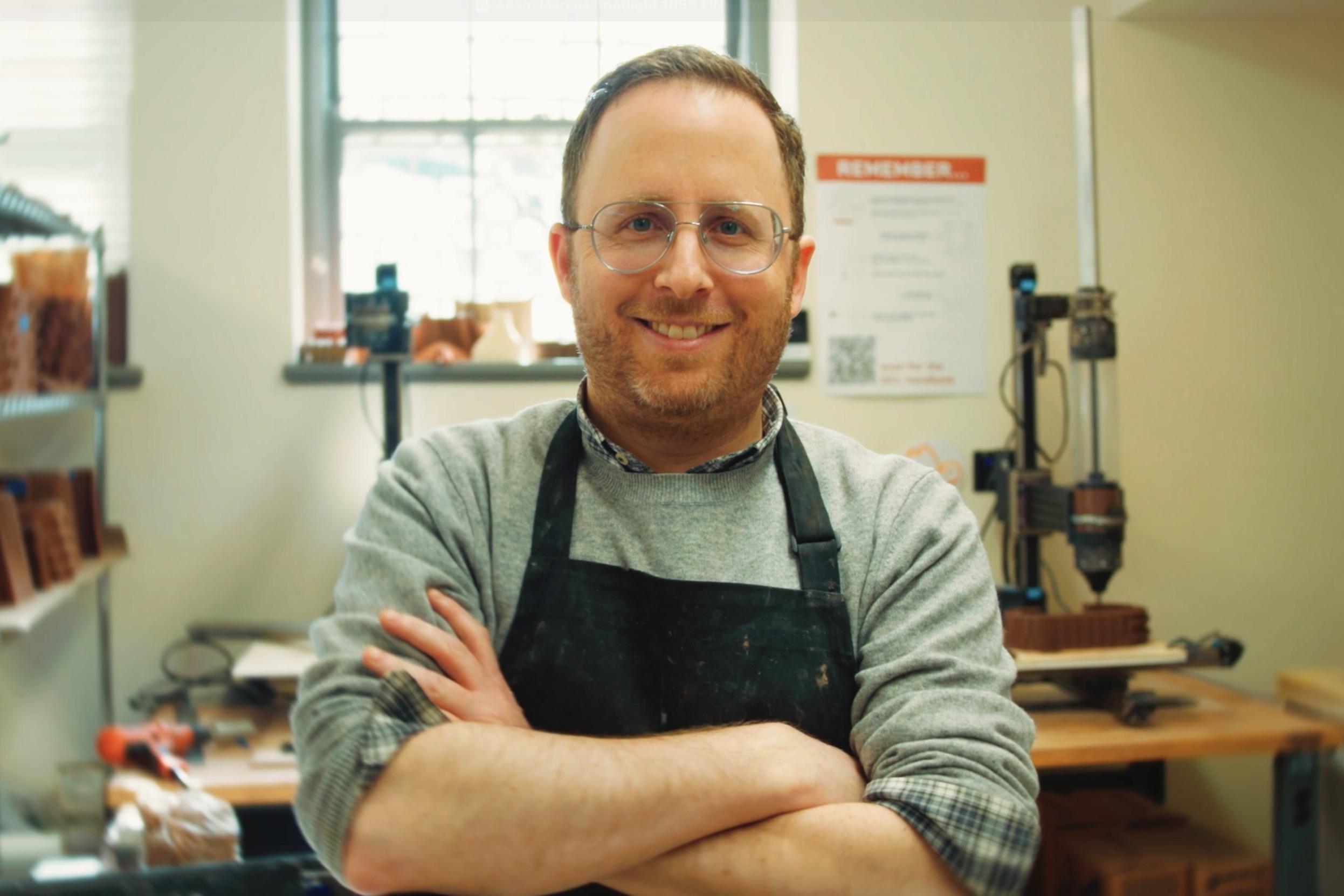How Tulane’s Adam Marcus uses architecture to support ecosystems
In the San Francisco Bay floats a little manmade island, just 14 feet long. The structure, called the Buoyant Ecologies Float Lab has been there since 2019, when researchers at California College of the Arts, including Adam Marcus, designed, built and deployed it as a prototype for a new type of resilient coastal infrastructure.
Marcus, now an associate professor of architecture at Tulane School of Architecture and Built Environment, is continuing his research into innovative ways to incorporate design into his architecture projects and his teaching.
Marcus is also co-author of “Drawing Codes: Experimental Protocols of Architectural Representation.” The book examines the impacts of computation and digital modeling on architecture as a discipline.
"For me, architecture is fundamentally a material practice."
Adam Marcus
For much of history, architects would hand-draw their designs. The prototypical image many people have of “an architect” is someone bent over a tilted desk with a ruler and a pencil, carefully drawing out a detailed diagram. As computers have become more powerful and more ubiquitous, however, the discipline has shifted to being more dependent on digital design technologies.
“I studied architecture about 20 or so years ago, at a time when computers and digital technologies were being introduced into the discipline,” said Marcus, “so that has become the focus of my own work, of how to introduce computation, robotics, digital tools, not just in a whimsical and fun way, but in a really critical way to try to leverage these to address bigger questions and bigger challenges.”
As essential as they are to his work and teaching, however, computation and digital tools are not the core of architecture for Marcus.
“For me, architecture is fundamentally a material practice,” said Marcus. “One of the main decisions we make as architects is what materials to use, where they come from, how they’re sourced, but also, once they’re assembled into buildings or other structures, how they perform and interact with the surrounding environment.”
One of the ways that Marcus is currently working with materials is in the Digital Ceramics Lab, which is a new collaboration between the School of Architecture and Built Environment and the Newcomb Art Department at the School of Liberal Arts.
“Recently here at Tulane, I’ve been teaching a series of studios with architecture students looking at 3D printed ceramic façade systems: walls and roof surfaces and some ground surfaces made of 3D printed ceramic components that can serve a variety of ecological functions.”
The 3D printed ceramics work in much the same way as other 3D printers do, but where most extrude plastic filament in layers, the machines in the Digital Ceramics Lab extrude clay. The structures built using these machines are digitally designed and thus highly customizable. Since they are made of clay, they can also absorb water and are sturdy enough to be used as part of the façade of a building.
“I’m really interested in looking at how small textures and pockets and different material qualities could create habitats for plants that could attract pollinator species, and fungi, and other things that we don’t typically think about as wanting to inhabit an architectural façade but can catalyze biodiversity in the ecosystem,” said Marcus.
Catalyzing biodiversity is important because it supports the local food chain and enhances the broader ecosystem. Ecosystems require a variety of plants and animals to remain healthy.
This is similar to the work he did on the Float Lab, which was designed with the ecosystem of the San Francisco Bay in mind. The underside of the structure became a home for marine invertebrates, while the top had ridges that collect rainwater into pools and offered a place for birds to perch and, based on the presence of fish bones, eat. The benefits of this structure go beyond helping sea life, however. It could also help mitigate wave action in the bay and decrease erosion along the coast, especially if it were larger or combined with other similar floating structures.
The Float Lab is also a great example of the material practice of architecture Marcus talks about. The lab, which incorporates a fiber-reinforced polymer composite substrate, was designed to attract and support marine life, unlike most current boats and marine structures, which often view the accumulation of marine life as a nuisance.
Though Marcus himself is not an ecologist, he uses principles of ecology and other disciplines, as well as experts in those fields, to inform his designs. That interdisciplinary work is something he passes along to his students, as well.
“With my students, I like to encourage what I call a pedagogy of informed speculation. The architecture students, they’re not scientists, they’re not ecologists, they’re not engineers, but they know how to connect and reach out and collaborate and get the kind of information that is necessary to make informed decisions about design,” said Marcus. He leads his students from the speculative stage through prototyping and, importantly, learning from their failures.
The students he teaches keep working though failures and learning because of their passion for architecture. “One of the things I love about teaching at Tulane is that the students in the School of Architecture and Built Environment are very committed to, excited and passionate about how architecture can expand beyond its traditional domain to take on and try to address some of these larger challenges that we’re facing globally,” he said.

